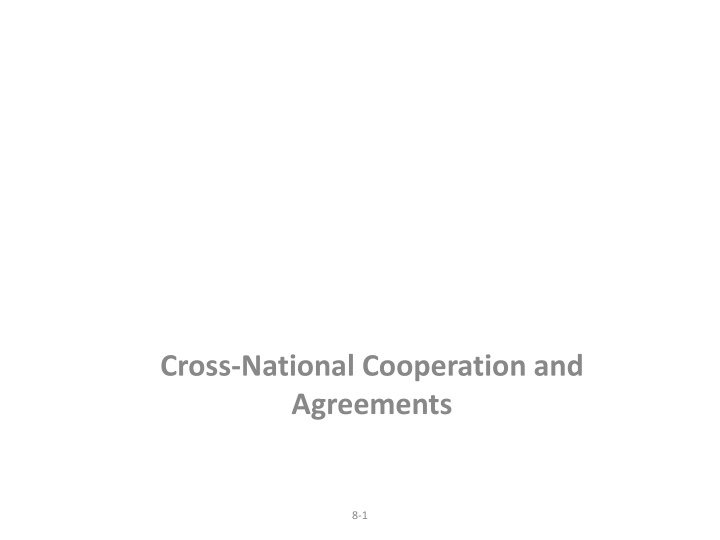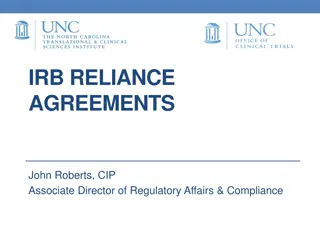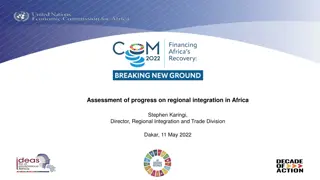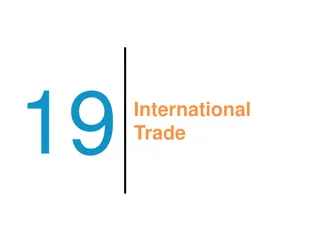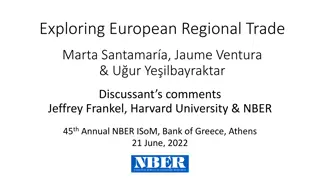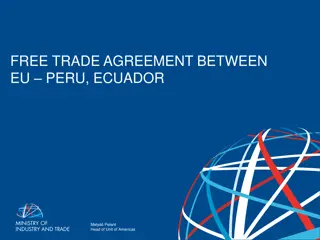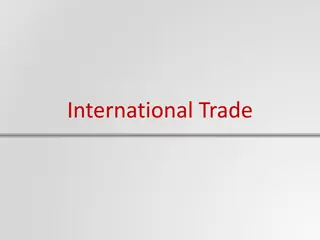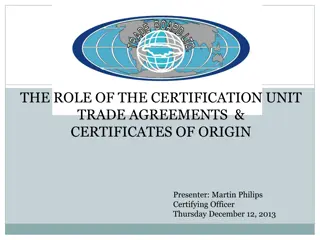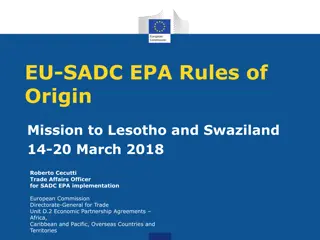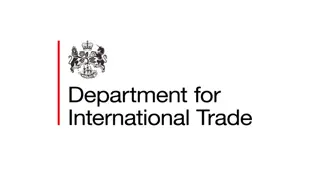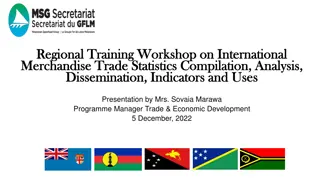International Trade Agreements and Regional Integration
Explore the General Agreement on Tariffs and Trade (GATT) and the World Trade Organization (WTO) as mechanisms for trade negotiations, along with regional economic integration efforts like the European Union and NAFTA. Discover the benefits and effects of cross-national cooperation and agreements on global trade dynamics.
Download Presentation

Please find below an Image/Link to download the presentation.
The content on the website is provided AS IS for your information and personal use only. It may not be sold, licensed, or shared on other websites without obtaining consent from the author.If you encounter any issues during the download, it is possible that the publisher has removed the file from their server.
You are allowed to download the files provided on this website for personal or commercial use, subject to the condition that they are used lawfully. All files are the property of their respective owners.
The content on the website is provided AS IS for your information and personal use only. It may not be sold, licensed, or shared on other websites without obtaining consent from the author.
E N D
Presentation Transcript
Cross-National Cooperation and Agreements 8-1
GATT The General Agreement on Tariffs and Trade (GATT), begun in 1947, created a continuing means for countries to negotiate the reduction and elimination of trade barriers and to agree on simplified mechanisms for the conduct of international trade 8-2
WTO The World Trade Organization (WTO) replaced GATT in 1995 as a continuing means of trade negotiations that aspires to foster the principle of trade without discrimination and to provide a better means of mediating trade disputes and of enforcing agreements 8-3
Regional Economic Integration Efforts at regional economic integration began to emerge after World War II as countries saw benefits of cooperation and larger market sizes 8-4
The Effects of Integration Once protection is eliminated among member countries, trade creation allows MNEs to specialize and trade based on comparative advantage 8-5
European Union Regional, as opposed to global, economic integration occurs because of the greater ease of promoting cooperation on a smaller scale The European Union (EU) is an effective common market that has abolished most restrictions on factor mobility and is harmonizing national political, economic, and social policies The EU is comprised of 27 countries, including 12 countries from mostly Central and Eastern Europe that joined since 2004 created a common currency, the euro 8-6
The North American Free Trade Agreement (NAFTA) The North American Free Trade Agreement (NAFTA) is designed to eliminate tariff barriers and liberalize investment opportunities and trade in services Key provisions in NAFTA are labor and environmental agreements 8-7
Regional economic integration in the Americas Caribbean Community (CARICOM) Central American Common Market (CACM) Central American Free Trade Agreement (CAFTA-DR) Andean Community (CAN) The Southern Common Market (MERCOSUR) The proposed South American Community of Nations. 8-8
Regional economic integration in Asia & Africa Association of Southeast Asian Nations (ASEAN) Asia Pacific Economic Cooperation (APEC) The African Union 8-9
